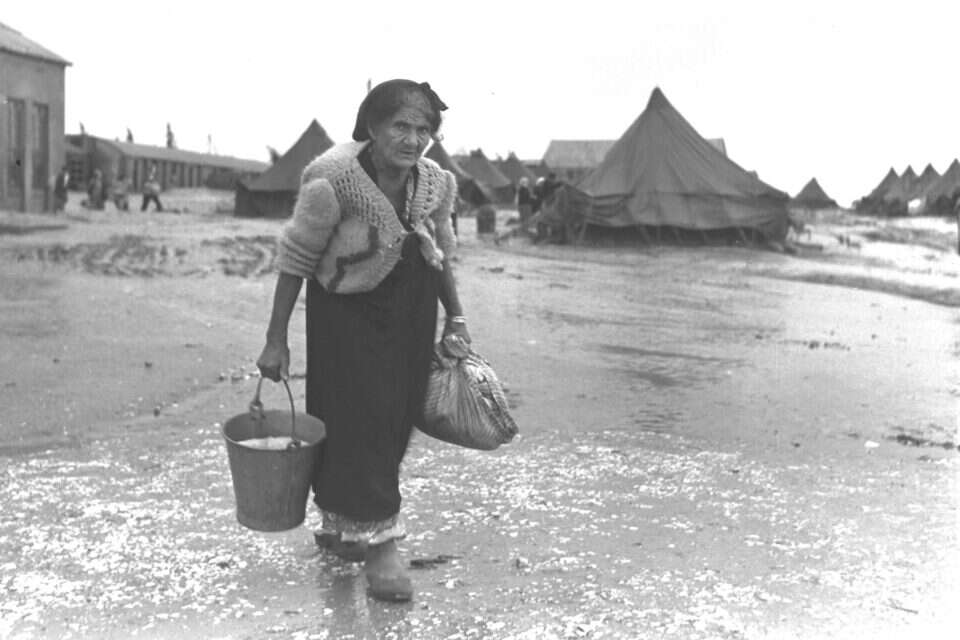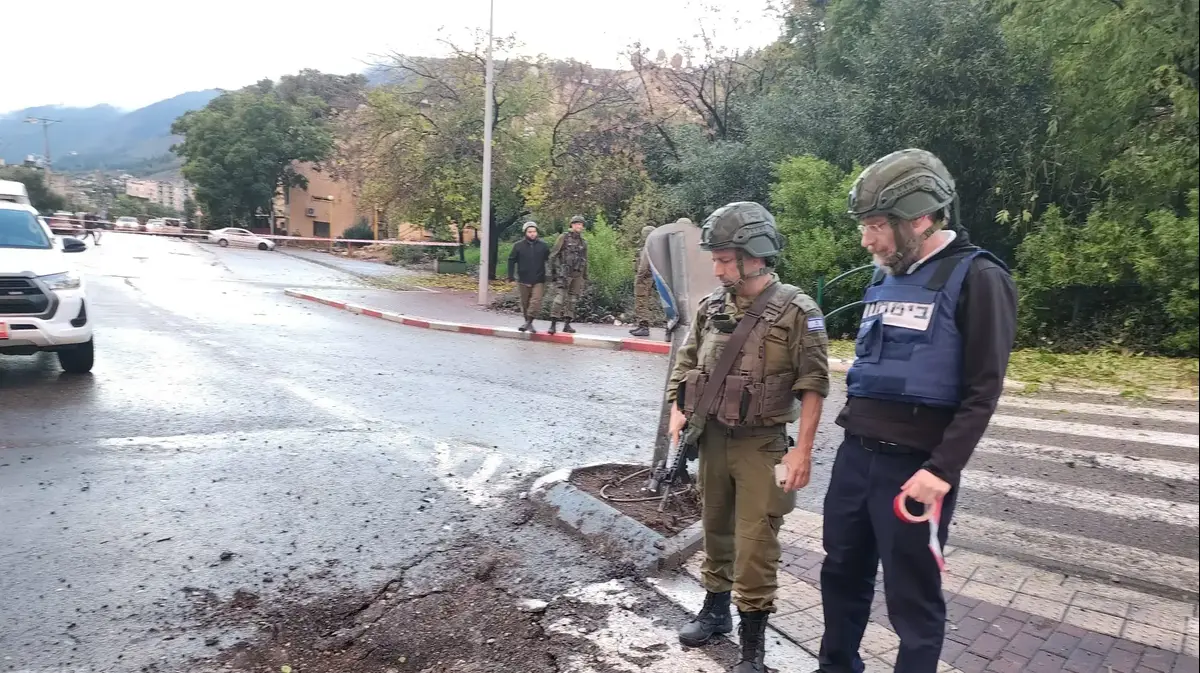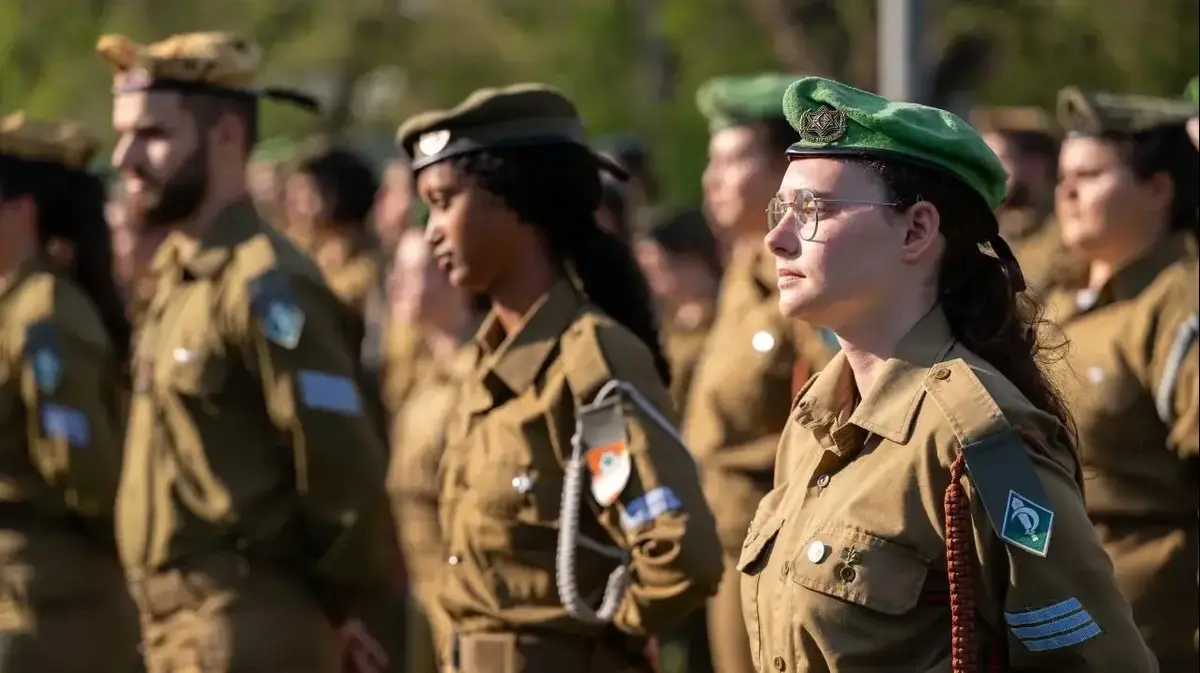Tuesday winter in the transit camps
The winter preceded 1951, and as early as the third week of October the chimneys of the sky opened and much rain fell.
Maariv newspaper reporter, Aharon Even-Chen, who signed with the pen name C.
Sharoni visited the immigrant residence in the Beit Lid area, where there were seven camps that were united into one transit camp called Shvut Am.
This is how Sharoni wrote: "When you approach, you get a dizzying 'caress' from the back of the tents: a huge wave of intense stench rises in your nose and surrounds you from all sides, from huge garbage dumps, overflowing toilets and toxic and flowing sewage canals. From all sides. "
The journalist adds that the signs of a strong storm that befell the area are visible from all sides, and in the dark tents sit the ascendants of a chair or a crate, and considerable despair in their eyes.
Others try to protect their tent from the flood by digging ditches around it and erecting small protective batteries from stones, while the women sew pieces of cloth and try to patch up the leaking tent sheets.
A huge amount of new tents, awnings, 150,000 blankets, 40,000 mattresses and many hundreds of clothes boxes were concentrated in the Jewish Agency's regional warehouse at the time, but no proper staff work was done to verify which of the transit residents had the greatest needs.
When the trucks with the equipment finally arrived at the transit camp, they were not unloaded in an orderly fashion, as the masses pounced on them and pulled any item they saw fit for their needs, quarreling, urging and shouting with the rest of their friends at the transit camp.
"Unfortunately, and despite all the great efforts we are making, some 23,000 immigrants from the 157,000 residents of the immigrant camps and transit camps around the country will still be living in tents this winter," said Raphael Frumkin, head of the Jewish Agency's absorption department.
After the split: the union of groups and kibbutzim was established
Monthly Organization of the Union of Groups and Kibbutzim,
In 1927, a nationwide organization of kibbutzim called the "United Kibbutz" was established, whose members supported the values of Zionism and socialism.
In 1951, 78 kibbutzim were included in this framework, with 31,000 members living there.
Over the years, however, the political-ideological tension between the members of the organization increased, with the majority identifying on all issues with the policy of Communism in the USSR and finding its affiliation with the United Workers 'Party (Mapam), while a smaller part adhered to the values of the Workers' Party. ).
Towards 1951, the Kibbutz Hameuchad saw an anti-Western and pro-Soviet extremism of the majority faction, with the debate over education, politics, and the balance of world power.
In a rift that erupted, the United Kibbutz split in two, in May 1951, and opponents of the political line advocating Soviet Russia retired and formed an organization called the "Union of Kibbutzim."
In addition, since 1920 there has been a settlement organization composed of a cooperative group of pioneers called the "Labor Battalion", whose members established Ein Harod, Tel Yosef, Kfar Giladi and Ramat Rachel, and over the years other settlement groups joined, which in 1930 joined the organization The groups. "
In 1951, the group included 43 groups and kibbutzim, and these merged on October 22, 1951 with the Kibbutz Union.
The new joint organization is now called the "Union of Groups and Kibbutzim."
In the following decades, the kibbutz movement underwent several organizational transformations.
Beginning in 1951, the kibbutzim operated as part of three large movements: the United Kibbutz, the Union of Groups and Kibbutzim, and the national kibbutz of Hashomer Hatzair.
In addition, a smaller movement operated on behalf of the religious kibbutz.
In 1981, the United Kibbutz merged with the Union of Kibbutzim and Kibbutzim, and together they formed the "United Kibbutz Movement" (1952). , Except the religious.
* Thanks to Dr. Mordechai Naor for the assistance
Construction workers go to the polls
A group of construction workers, 1950s, Photo: Michal and Moshe Yaffe collection, "Beitmona" website
More than 600,000 new immigrants arrived in Israel from the day of its establishment in May 1948 to the end of 1951, and all of them were required to be housed.
Therefore, the various construction professionals have become especially in demand.
It is estimated that the number of construction workers in Israel in October 1951 was 40,000, about half of whom worked in the private sector, about 13,000 in the public sector (government, housing, agency and the Ministry of Defense), about 5,000 in construction materials companies, and 2,500 in quarries.
On October 24, 1951, about 20,000 of them came to vote for control of the Histadrut workers' institutions.
The election struggle broke out between the parties that brought together most of the construction workers: Mapai (Eretz Israel Workers 'Party), Mapam (United Workers' Party), MKI (Israeli Communist Party) and the Zionist worker.
Many issues required urgent treatment by the Histadrut workers' organizations.
The first problem that required management to take care of was organizational: in the previous elections, held 13 years earlier, the number of construction workers in the country was about 4,000, and now the number has, as mentioned, jumped tenfold.
Thus the institutions were required to split, with each construction profession having its own needs and interests.
In addition, the elected officials were required to work to stabilize the daily wage rate, which on the eve of the election was NIS 3,700 per eight-hour working day in the "AA" status. A simple worker, without status, was content with a wage of NIS 2,700 per working day.
In the election itself, Mapai finally won, garnering 56 percent of the vote.
New chain of stores
Logo of the "Choice" chain of stores, Photo: Nostalgia Online website archive
An Israeli-American company called Overseas Distribution announced on October 17, 1951, the launch of a new chain of stores in Israel called "Choice."
Only those who hold a dedicated gift certificate called "Overseas", which can be purchased at the company's various branches in America and Europe, as well as selected banks and hotels in the country, will be able to enter the chain stores.
The coveted gift certificate, which in those days could only be obtained by tourists or Israeli citizens who received it as a gift from their relatives abroad, gives the customer the option to purchase at the store as he pleases - according to the value of the "Obersis" certificate in his possession. , In Tel Aviv and Haifa. "
Luxury shopping tax
In 1949, a tax was introduced in Israel on goods that were considered "luxuries" at the time.
This tax brought about 10 million pounds into the state coffers in 1950, but finance officials complained that taxation on "products for the rich" alone was not enough.
Therefore, at the end of October 1951, another list of products entered into the Luxury Tax Act was published, including simple plates, light bulbs and baby strollers.
Following the public outcry that arose, the Treasury rushed to issue the "purchase tax" in 1952, which authorized a committee on its behalf to impose a purchase tax on certain products, at its discretion.
Box office hit on the Bible
At the beginning of October 1951, a new Hollywood adventure film called "King Solomon's Mines" starring Deborah Kerr and Stuart Granger premiered at the Haifa Amphitheater.
Although the film was of normal length, the price of the ticket was double, as cinema owners used to charge for extra long films.
Despite the high price, crowds of curious people stood in line for the box office, as the film enjoyed worldwide success, won an Oscar for photography and was nominated for a statuette in the foreign film category.
In 1985, Golan Globus produced a novelty for the film starring Sharon Stone, Richard Chamberlain and Shaike Ofir.
The missing / events that were
"People and their land" exhibition
Design: Franz Krauss, courtesy of the Central Zionist Archive,
An exhibition that was presented from time to time and was intended to describe the connection between the Jewish people and the Land of Israel.
It began to be displayed from 1945, and in 1951 it was raised as part of the jubilee celebrations for the establishment of the Jewish National Fund (in 1901).
The exhibition was presented in the "Exhibition Pavilion" that once stood on Shapira Street in Tel Aviv, and was divided into five sections according to topics.
Admission was free, and in 1951 it was visited by more than 50,000 people.
The grocery store / products from the past
Sugar cone
Photo: Nostalgia Online Archive,
Until the establishment of a major plant in Israel in the early 1960s in Kiryat Gat, Israel suffered for years from a shortage of sugar, and sweet grains were considered a terribly expensive commodity.
In order to reduce costs for the family, in those days they used to buy a lump of sugar in the shape of a cone, weighing about two kilograms. Regular.
Faults at the beginning of the citrus harvest in the Sharon
Photo: GPO,
On October 23, 1951, the harvesting work began in the orchards of the Sharon, and the orchards encountered many mishaps, chief among them a severe shortage of workers - mainly rice.
"Anyone can pick, but packing the fruit in a box requires knowledge and skill," explained orchardist Shlomo Ganz.
According to him, the Ministry of Labor opened special courses for training rice in the summer, "but they were immediately swallowed up by the large orchard organizations."
Another problem was the lack of components for the production of wooden crates, which caused carpenters who specialize in installing crates to export citrus to strike from their craft.
In the photo: Katif in the Sharon, early 1950s
Ads that were
Do you have pictures or souvenirs from the first days of the country? Write to us: Yor@ShimurIsrael.Org















/cloudfront-eu-central-1.images.arcpublishing.com/prisa/EXJQILQR5QI7OMVRTERD7AEZAU.jpg)